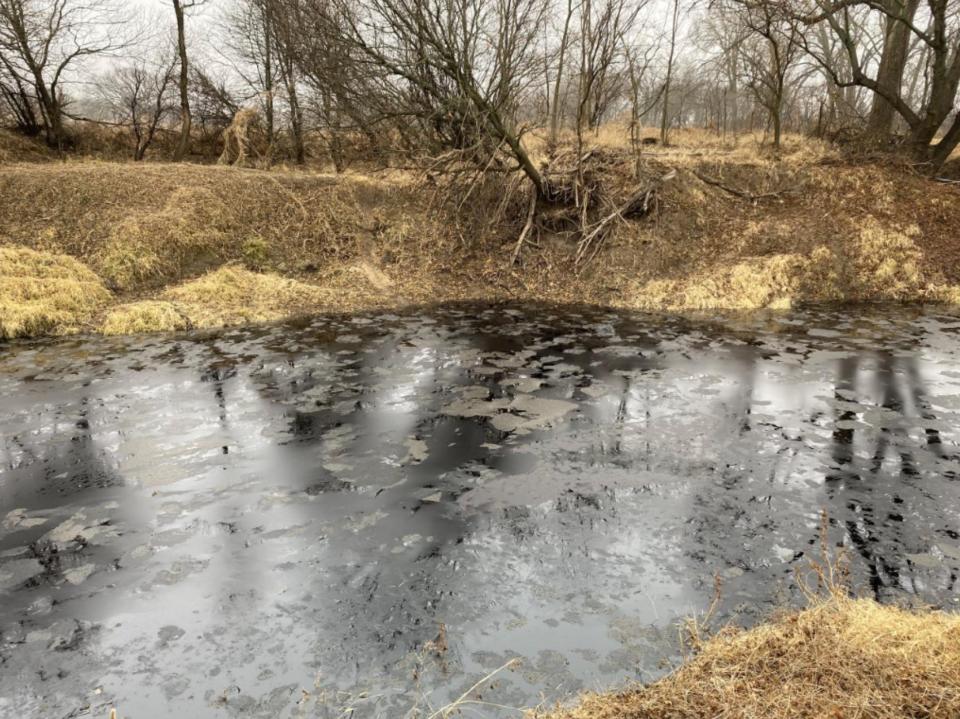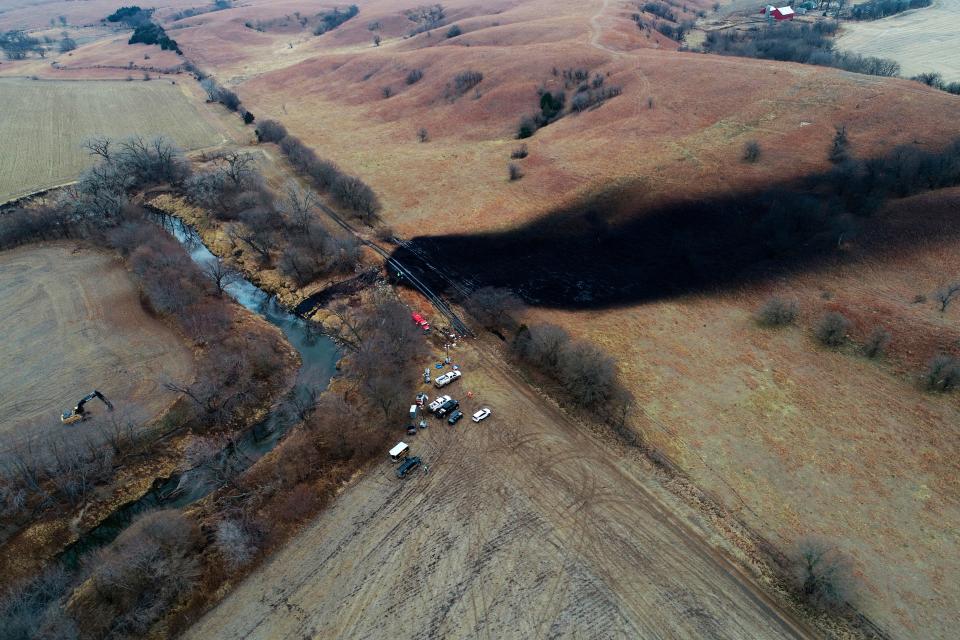10 months after Keystone Pipeline's largest oil spill, water is flowing again in Kansas creek
It took 10 months, but water is now flowing naturally in the Kansas creek that was contaminated by an oil spill last year.
The U.S. Environmental Protection Agency announced Tuesday that oil recovery operations and Mill Creek restoration efforts are complete.
The Dec. 7 oil spill in Washington County was the largest oil spill in the history of TC Energy's Keystone Pipeline and the largest onshore oil spill since 2014.

The EPA reported that more than 650,000 gallons of oil were recovered, including oil still in the pipeline after it ruptured.
Nearly 13,000 barrels of crude oil — or 546,000 gallons — were released in the spill, TC Energy reported to shareholders in July.
The EPA confirmed the removal of all oil during a Oct. 13 inspection of the creek. The diversion system and final berms were removed to allow the stream to flow naturally again. Cleanup efforts had included diverting the creek.
More than 54 million gallons of contaminated surface water was treated and discharged back into the creek, the EPA said, and about 200,000 tons of soil, sediment and debris affected by the oil were excavated and sent elsewhere for disposal.
The EPA said its staff worked more than 6,000 hours across 83 trips to the scene, with support from several EPA regions and the U.S. Coast Guard's Atlantic team.
The TC Energy report to investors estimated environmental remediation would cost the company nearly $800 million. That amount could be reduced by insurance, with nearly $200 million from insurance at that point, but the cost could increase due to fines and penalties.
That cost estimate is up from a previous report to shareholders of $650 million and the $480 million a company executive told legislators in a March hearing.

The Kansas Department of Health and Environment and the U.S. Army Corps of Engineers will continue inspections and monitoring. Those efforts will last for five years, or until officials determine they are no longer needed.
A root cause failure analysis determined blamed a fatigue crack in a weld and the pipeline's faulty construction. The report cited "gaps in company standards, policies, and administrative controls" for its design, as well as shortcomings in construction that created significant stress on the pipeline.
The pipeline operator previously said it would investigate other locations with similar characteristics, but the company didn't say how many there were or whether any were in Kansas.
Jason Alatidd is a statehouse reporter for the Topeka Capital-Journal. He can be reached by email at jalatidd@gannett.com. Follow him on X @Jason_Alatidd.
This article originally appeared on Topeka Capital-Journal: Kansas creek restored after Keystone Pipeline's largest oil spill

